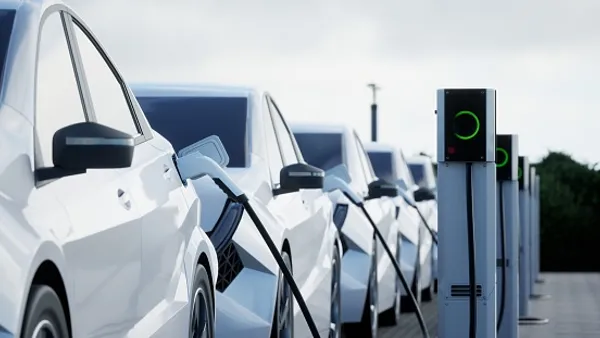As our energy grid supply becomes more decentralized, grid operators will need to rethink their management strategies to ensure grid stability and resiliency. Fortunately, there’s a growing number of tools, from intelligent software to clever pricing strategies, that grid operators have access to in their proverbial tool belts, ready to take on this challenge.
Over the last century we’ve built linear, centralized, dirty electrical networks, which sent electricity from a relatively small number of fossil-fuelled power stations through transmission grids, then onto more local distribution grids and finally into customers’ homes. These systems operated by simply “turning up” and “turning down” power stations to match how much energy those at the end of the system were consuming and to avoid power surges or cuts.
Today however, our grids are more complex than ever before, with a growing portion of electrical generation distributed across a wealth of wind and solar farms. These renewables are clean and cheap, yet their intermittency poses a well-known challenge when it comes to matching up energy supply with energy demand.
At the same time, we’re seeing another big decentralized development: a huge rise in consumer energy tech, with distributed energy resources (DERs) such as electric vehicles, rooftop solar panels and in-home batteries proliferating. This transformation creates huge opportunities across the industry with the potential to open up markets, engage consumers, and facilitate a far greener system — but it also poses yet another set of challenges.
As more people adopt the use of DERs into their homes, it could put incredible strain on the grid. Residential electricity demand is expected to increase by 18% in 2030 and 38% by 2035, in large part driven by the transportation industry, namely EV ownership. To truly decarbonize, we need major grid scale changes to support this kind of demand.
Renewable rollout and DER proliferation – can cancel each other out, coming together to create a powerful solution and unlocking a greener, cheaper, smarter energy system than before. Energy transformations are turning long-held energy assumptions on their heads, including the premise that influencing energy demand, rather than energy supply, could have a substantial impact on the management of our energy systems.
Leading utilities are already influencing consumer energy demand in clever, hassle-free behind-the-scenes ways. For example, pioneers are making use of next-generation operating systems to automate electric vehicle charging, offering bespoke tariffs that automatically charge EVs at the cheapest, greenest times overnight. Some even offer two-way vehicle-to-grid (V2G) charging, which allows EVs drivers to get paid for discharging surplus energy back into the system and balancing the grid when renewables are scarce.
Yet grid operators, especially those distribution system operators (DSOs) managing local grids, still have their work cut out for them adapting to the more complex energy usage patterns and “bi-directional flow” with energy flowing back up the wires into distribution grids from solar panels, batteries and V2G compatible EVs.
To start, local grid operators will need to be able to see what’s going on across their networks. Currently, most distribution grids have relatively poor real-time visibility into their grid’s performance. Fortunately, next generation energy operation systems are rising to the challenge here too, and can increasingly unlock this much needed functionality.
Ensuring that DSOs can see what’s going on is only the beginning. Using that information, they’ll need new methods to help encourage consumers to use their tech in ways that line up with the availability of cheap renewables and facilitate healthy grid management.
Another key tool revolves around price signals. Once they have good visibility, DSOs could use grid tariffs to alter the prices on their local networks, a bit like congestion charges to manage traffic in busy cities. DSOs currently set similar rates, which are usually passed on to customers, but they tend to be flat (non-variable), which gives no incentives for intelligent energy usage.
Local grid operators could use grid tariffs to create lower prices on distribution networks when local supply outweighs demand, to encourage the vacuuming up of excess energy and higher prices to discourage energy use with higher prices when energy is scarce and local demand outweighs supply. What’s more, ordinary consumers need not be directly exposed to these changing prices. Instead, these signals might be passed onto utilities, who can use the information to more accurately price specialized tariffs, such as those that encourage EV charging at the most efficient, cost-effective times. This way, customers get cheaper pricing and greener energy, utilities get happier customers and more desirable rates, and grid operators have to spend less on a cleaner grid — everybody wins.










